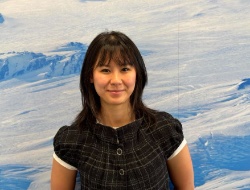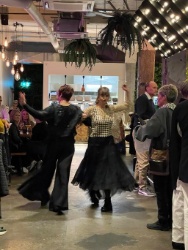Turn Up The Heat This Winter In Rotorua’s Wonderland
Turn Up The Heat This Winter In Rotorua’s Geothermal Wonderlands
ROTORUA, Thursday 28th March 2013: Autumn’s chillier temperatures are beginning to settle in and for visitors to Rotorua’s geothermal wonderland this is good news: atmospheric changes during the cooler months bring the city’s world famous geysers, mud pools and hot springs to their spectacular best.
Destination Rotorua Marketing general manager, Oscar Nathan, says while Rotorua traditionally experiences higher visitor numbers during the summer months, winter presents the perfect opportunity for guests to experience the region’s most famed attractions.
“Rotorua is a destination like no other in New Zealand. Our region boasts five main geothermal areas where visitors can experience a variety of active geysers, hot springs, boiling mud pools and thermal creations formed over millions of years. At this time of year they are especially vibrant – there’s no better time to visit.”
Te Puia, set amongst the Te Whakarewarewa Geothermal Valley, is home to the world-famous active geyser, Pohutu, which erupts up to 30 metres in the air. Te Puia’s visitor experience general manager, Taparoto Nicholson, says increased rainwater creates more steam and moisture, invoking a ‘moody’ atmosphere in and around the geothermal hotspots.
“We generally see more steam and mud pool activity in winter,” Nicholson says. “In summer the mud pools are drier and look more desert-like but in winter they rise, reach a higher bubbling point and become a more vibrant, living pool which is magnificent to see up close.”
Long-forgotten geothermal features, such as the now dormant Papakura geyser and Ngapuna Tokotura mud pools are being uncovered by staff working to clear overgrown vegetation throughout Te Whakarewarewa, providing new and exciting sights for tourists to marvel at.
“Te Puia has a large number of small hot pools with different acidic and sulphur levels that have healing properties,” Nicholson says. “We are working on creating areas where people can relax their feet in these pools and enhance their visitor experience.”
The valley is also home to a traditional Maori settlement called Whakarewarewa – The Living Thermal Village, which has been hosting visitors since the early 1800s. The Tuhourangi/Ngati Wahiao people illustrate how daily life unfolds amidst the steaming landscape. With approximately 500 hot springs, the terraces and steaming vents, visitors can witness first-hand how the local people still utilise the hot pools and steam for daily living.
GNS volcanologist Brad Scott says Rotorua’s active and dynamic geothermal system boasts unique points of difference which you won’t find anywhere else in the world.
“Several Maori villages actively use these geothermal features and you also have a modern city sitting right on top. This is incredibly different to what you will find overseas and well worth a visit,” Scott says. “The features do look more spectacular in the cooler climate of winter because of the change in humidity and temperature.”
Rotorua is just a 2.5 hour drive from Auckland and Air New Zealand flies directly into the city from most major domestic airports. With winter fast approaching, now is the perfect time to experience the following geothermal hotspots in Rotorua:
Te Puia:
• Home to the famous Pohutu geyser (pictured
above), which erupts up to 30 metres high and is the largest
active geyser in the Southern Hemisphere.
•
• Last winter Te Puia cleared away extensive
scrub and undergrowth to open up the landscape to reveal how
it would have been more than 100 years ago. One of the
features revealed as a result of the work is the now dormant
Papakura Geyser, the namesake of famous guide, Maggie
Papukura.
•
• Te Whakarewarewa Geothermal Valley
features approximately 500 hot springs, 65 geyser vents,
terraces and hot pools.
•
•
Whakarewarewa
– The Living Thermal Village:
• This is
where the Tuhourangi/Ngati Wahiao people have a proud
heritage which they have shared with visitors from all
around the world for over 200 years.
•
• Since
the early 1800s they have been hosting and welcoming
visitors into their homes and backyards, demonstrating the
utilisation of the natural geothermal wonders for cooking
and bathing in everyday life.
Waimangu Volcanic Valley:
• The world’s youngest geothermal
ecosystem created in the same eruption that buried the
‘8th Wonder of the World’, the Pink and White
Terraces.
•
• The 1886 Mount Tarawera eruption
changed Lake Rotomahana dramatically, exploding it to 20
times its size, making it 38,000 square metres.
•
• Within 15 years of the volcanic eruption,
the hot springs of the Waimangu geothermal system (which
reach temperatures between 45 and 55 degrees) were
established within the newly formed craters, making it the
deepest lake in the North Island
•
• Visitors
have the opportunity to take a cruise on beautiful Lake
Rotomahana – the world’s largest hot
spring
•
• Waimangu Volcanic Valley is a wildlife
refuge and home to large numbers of birds all year
round.
Wai-O-Tapu Thermal Wonderland:
• Wai-O-Tapu
(meaning sacred waters) is New Zealand's most colourful
natural volcanic area - a wonderland of coloured pools, huge
volcanic craters, unique sinter terrace formations and the
Lady Knox Geyser which erupts daily at 10:15am to heights of
up to 20 metres.
•
• It is also home to the
world-famous Champagne Pool (pictured above) - a majestic
hot spring that was formed over 900 years ago and named for
the carbon dioxide that bubbles within the 74 degree waters.
Hell’s Gate Geothermal Park & Mud Spa:
• New
Zealand’s most active geothermal park with a fascinating
Māori history tracing back 700 years – has just opened
added a new visitor experience, the family mud
baths.
•
• The area is filled with steaming hot
springs, bubbling mud pools (pictured above) and Kakahi, the
largest hot waterfall in the Southern Hemisphere.
•
• Here you can slip into the only mud baths in
New Zealand to experience the curative and invigorating
properties of the renowned geothermal mud, which is likened
to ‘playing in silk’. On certain days, the twilight free
form sulphur spa is open after 6pm for visitors to enjoy a
healing experience under the
stars.
ENDS


 TUANZ: Connecting Aotearoa 2025 Report: Pushing For 100% Digital Connectivity
TUANZ: Connecting Aotearoa 2025 Report: Pushing For 100% Digital Connectivity Stats NZ: Food Prices Increase 4.6 Percent Annually
Stats NZ: Food Prices Increase 4.6 Percent Annually Antarctica New Zealand: Antarctica Scholarships 2025 - Ocean Detectives
Antarctica New Zealand: Antarctica Scholarships 2025 - Ocean Detectives Napier City Business Inc.: Fashion In The City Signals A New Era Of Local Collaboration And Creativity
Napier City Business Inc.: Fashion In The City Signals A New Era Of Local Collaboration And Creativity The Reserve Bank of New Zealand: RBNZ Explores The Impact Of An Ageing Population On The Financial System
The Reserve Bank of New Zealand: RBNZ Explores The Impact Of An Ageing Population On The Financial System  NZCCC: NZCCC Echoes Calls To Increase Funeral Grant Funding
NZCCC: NZCCC Echoes Calls To Increase Funeral Grant Funding


